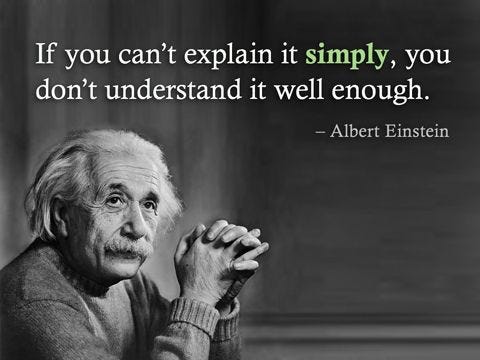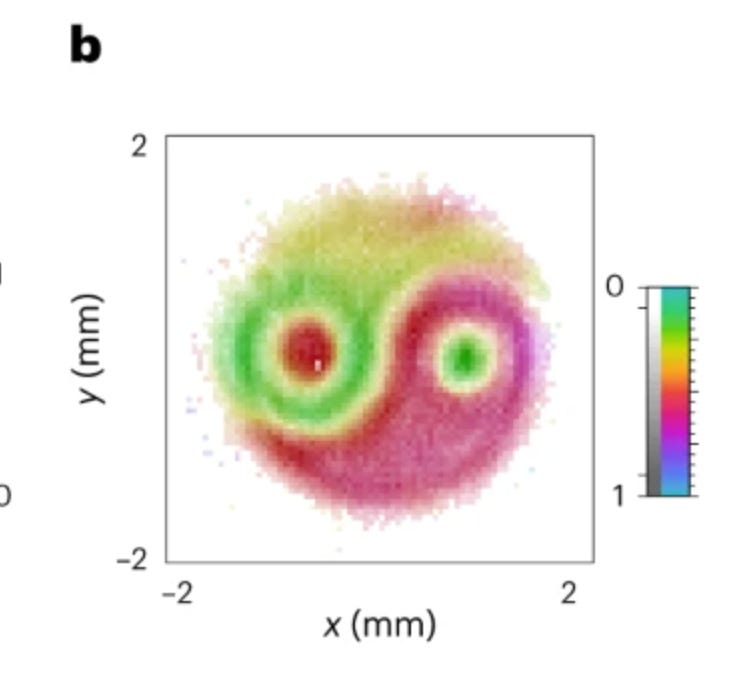I have always felt like a bridge between science and spirituality, as if that was one of the things I was meant to embody and subtly teach others in my lifetime.
To me, they have always simply been two sides of the same coin, two different methods to get to the same place, the truth lying somewhere in the seam.
Being integrated with these two approaches has taught me first and foremost the disparity that exists between them, and how much science rejects spirituality. I have a professional background in the sciences, and so with everything I do here, I sign my name Kerry Jane (which is my first and middle name) to give myself some anonymity in the event that I have my name on scholarly literature (and I do now).
Thankfully, the spiritual community is a lot more open to science. However, I also find that they struggle to understand some of the concepts and frameworks of what science offers, which inadvertently leads them down paths of magical thinking that give them a warped perception of reality.
Consequently, I have found myself in this awkward position of falling into the two camps simultaneously, which in today’s day and age means belonging to no group at all.
It’s for this reason that I am so grateful to stumble upon works like The Tao of Physics, which so carefully unifies the two in a way that honors both.
Fritjof Capra investigates the surprising correspondence between quantum physics and eastern mysticism. As much as science would like to distance itself from spirituality, it has become exceedingly apparent that the more we learn about the nature of reality, the more of what the mystics of ancient teachings have been saying for millennia is substantiated.
Key Takeaways
1. The importance of an ecologist’s perspective.
In addition to his work in Physics, Capra was also an environmental educator and activist for 25 years. It wasn’t until I read this book that I came to realize how the mind of an ecologist is better suited to understand some of the new discoveries in science.
“Deep ecology does not see the world as a collection of isolated objects, but rather a network of phenomena that are fundamentally interconnected and interdependent.”
“Physics cannot say much about these living systems. It can provide knowledge about material structures, energy, entropy, and so on, but the very nature of life is something that eludes physics… At the forefront of contemporary science, the universe is no longer seen as a machine composed of elementary building blocks. We have discovered that the material world, ultimately, is a network of inseparable patterns of relationships; that the planet as a whole is a living, self regulating system.”
The ecologist understands the interconnection of all things. My field is in ecology and I have worked with chemists, engineers, and data scientists. Their world is likened to that of a machine- a closed system with independent moving parts. The human machine (this paradigm we’ve created) and the natural world, are not the same. When performing experiments in ecology, the engineer and the chemist are often confused about why trials can’t always be performed consistently and efficiently while working with living organisms ecosystems. There are simply too many moving pieces and unpredictable factors. This is why in ecology, qualitative data can be just as important as quantitative data, because without the qualitative information the numbers can’t be appropriately weighted and understood. Nature is not a machine, as Loren Eisley has also discussed in his lectures, and advances in the last century seem to have been slowly revealing this whilst receiving a lot of resistance from scientists who worship matter and its mechanistic qualities. Their world merely scratches the surface of this reality.
2. Higher concepts are lost in translation.
Humans have evolved senses that are only meant to navigate a world existing in the 3rd dimension. It should be this way, otherwise we would not survive. Consequently, our linguistics are structured to convey this reality. The challenge is not just presented in pushing the boundaries of our minds, it’s also in coming back down into the existing paradigm everyone else resides in and relaying the message as to what was found. Both scientists and mystics struggle with this.
“Quantum theory and relativity theory, the two bases of modern physics, have made it clear that this reality transcends classical logic and that we can’t talk about it in ordinary language.”
It pains me sometimes to think that the rest of the universe is inaccessible to the human mind, which is held back by the human ego, and which responds directly to what the collective agrees what is real and not real.
3. The truth lies in the intersection of logic and intuition.
Both science and spirituality are suitable for navigating this world. They supplement one another, and ultimately both are needed. Knowledge should derive from both experimentation and meditation.
“Most of today’s physicists do not seem to realize the philosophical, cultural and spiritual implications of their theories.”
I’ve always thought of philosophy as a way to balance the two. It adopts both pathways. Philosophical proofs give us reasoning and evidence, while also utilizing imagination and a heightened state of consciousness needed to realize certain abstractions and complex concepts.
Many scientists worship matter. The’ve denounced the dogma of religion and created a whole new one in the name of science. Oppose something enough and you will come full circle, ending right back where you started. The law of opposites, the very yin and yang symbol on the cover of this book, teaches us that.
After having one foot in spirituality and one foot in science for quite some time now, I can assure you that it doesn’t matter if it’s sacred knowledge passed on from people over time, or the scientific method, the human ego finds a way to sabotage it. It appears that nothing, and no one, is safe from the human ego and our quest to control the narrative. Everybody wants to monopolize truth. Perhaps it’s not a matter of which approach is best, but whether or not the human race will be able to overcome this.
Some light criticisms:
There were many advanced concepts introduced that I think warranted further explanation. For example, the “bootstrap theory” is mentioned at length at the end of the book, but it was only given a footnote. Someone like me needs more elaboration in layman’s terms (if that’s even possible, going back to the point made on all of this being lost in translation).
I would have liked a comparison of the wisdom passed on by indigenous cultures, especially those held in the Americas. There is western mysticism after all, it was just erased from history along with the genocide that took place. A lot of their beliefs also parallel modern discoveries, and such is the way of the shaman. I guess that is a topic for another book, given the title.
Some Other Pondering:
Wave ~
Every time I delve into subjects like this, it leaves me questioning whether or not we have properly defined everything. We seem to be very good at identifying what exists and investigating that, but perhaps without having a full, comprehensive understanding of it before moving on to the next thing.
For example: I’m not convinced we know what a wave is.
The internet: “A wave is a disturbance that transfers energy from one location to another without transferring mass.”
Me: “Right…………. so what is that, even? The disturbance, I mean…”
I can’t help but feel that it might as well say “Stuff that does stuffy stuff.”
It comes as no surprise to me that advanced physics has blurred the lines between what a wave is and what a particle is with the double-slit experiment. Of course, this might all just be my own failure at understanding, or the failure of modern linguistics.
Sacred Geometry △
This is something that I’d love to investigate and write about, but what I’ve learned about geometry (which is linked and communicated through numerology) is that it would take me 10 years of analysis and meditation to only brush the surface of understanding it and communicating it.
My initial understanding is that there’s a frequency with a signature pertaining to a wave (which as I mentioned, I’m not convinced we know what is yet) that somehow translates into reality in the form that we perceive as matter.
This reminds me of the holographic universe theory, which is a whole other can of worms.
New Discoveries
This discovery published in 2023 left me in utter amazement. Quantum entanglement, a phenomenon Einstein called “spooky action at a distance”, is a mysterious connection between two or more particles where they are linked and share the same quantum state. No matter how far apart they are, they share an instantaneous connection. In this study performed at the University of Ottawa and Sapienza University of Rome, an image of the wave function of entangled photons was captured, depicting the yin-yang symbol.
The last edition of The Tao of Physics was published in 2010. It makes me happy to think of distinguished Fritjof sitting at his Berkley home, perhaps enjoying a nice coffee and breakfast with the morning paper, receiving this news (I know this is a stretch of the imagination, but let me have this good feeling lol). After all that time, putting his neck out and pioneering the way for this unification of thought and intuition, all while receiving backlash from his colleagues who are in the game for money, ego, or even power.
The truth, although confusing and at times deceptive, cannot hide forever. It must come out eventually. I look forward to all the discoveries that have yet to come… but perhaps we already know about them, and they are patiently waiting to be remembered.
Meet the Editor
Ricardo enjoys podcasts, heart chakra music, and warm things. Ricardo works up an appetite editing and coproducing Metanoia. Just one paid subscription pays for 6 weeks of crickets.
What to read next…
The Firmament of Time By Loren Eiseley
This post is brought to you by Free Demons, who recommended Loren Eiseley’s work to me on a journal entry I shared called What Is Nothing?











What is magic but the unseen, the not yet known, like the colors on the spectrum that the human eyes can not yet perceive, limited by their biology. Is perception warped by what we don't understand? How does our perception of an object cause it to change, simply by viewing it? Perhaps the object was already changing, or not. I wonder, how could anything not change? So many mysteries.🤍🪽
I read Capra in seminary and still have my copy on the shelf